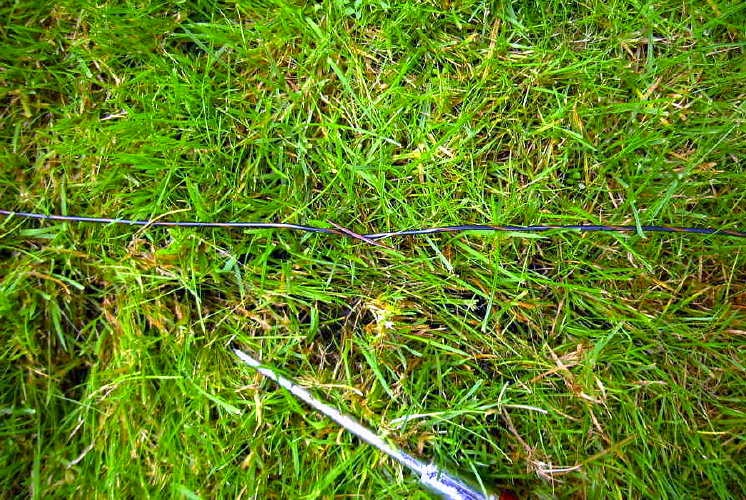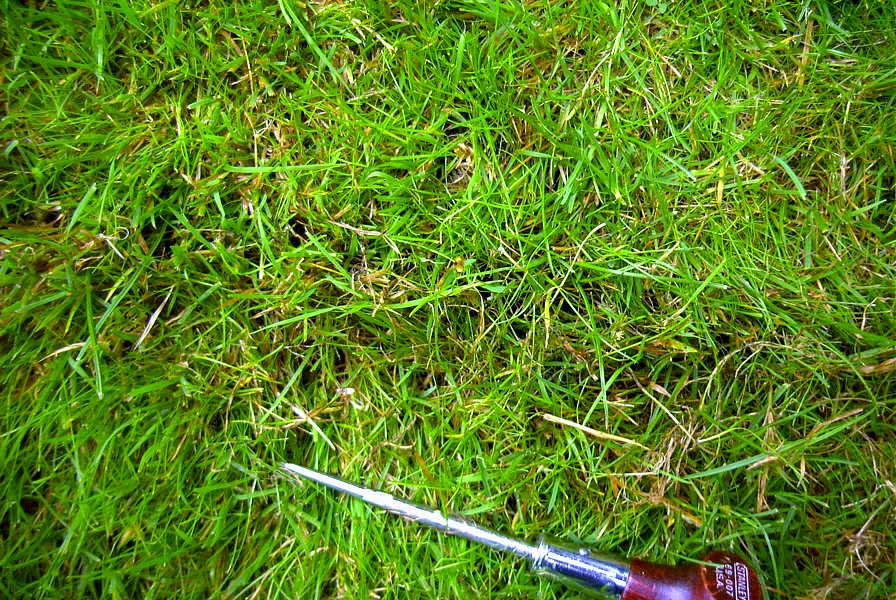 Planting New Radials
Planting New Radials
 |
| Courtesy: http://www.picgifs.com |
The procedure I follow is fairly easy but does take time and I usually just add four or five each year. Although I haven't kept an accurate count, I know the system now has fifty or more radials varying from 30' to 70', fanning out in various directions from the base of my main tower.
The terminated end of the radial is first pinned-down using a U nail or a longer 3 1/2" galvanized finishing nail that has been bent over in the vise, with the height of the grass determining which one I use. Shorter grass lets you get away with the smaller U nails, which can be found in most building supply stores.
Once pinned, the grass is parted using a stick, knife or awl, to produce a shallow gap for the radial to sit in. I try and do a 3-foot section at a time before placing the wire into the opened-up area. Another way that is effective, especially if the grass is short and the soil dry, is to run the blade of a knife through the grass to actually slice a shallow slit which the wire can be pushed into. This allows the wire to be almost completely buried immediately. Both methods require pinning, with the nails, every few feet.
Once pinned in place, the grass can be quickly ruffled back into place, covering the radial. When done in the fall or in the spring, the grass will very quickly completely overgrow and incorporate the radial into the lawn, never to be seen again.
An interesting product that I have recently learned of may also be of interest - "Ground Staple Pins" by RossRadio. Details may be viewed at their website.
 |
| Courtesy: http://www.rossradio.net |
With the winter DX season just around the corner and the pleasant fall weather, it couldn't be a better time to plant a new crop of radials in the backyard!
















